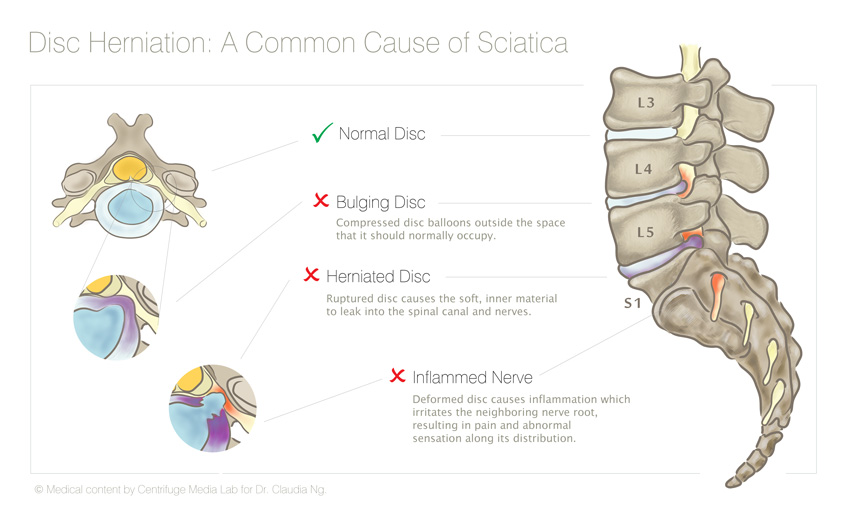Discogenic pain is pain that is generated by the intervertebral discs in the spine. Intervertebral discs are like semi-fluid ball bearings that sit between the vertebrae, acting as shock absorbers during movements of the spine.
What causes discogenic pain?
When the inside of an intervertebral disc (called the nucleus pulposus) is compressed, it “spreads out”, straining the outer part of the disc (called the annulus). Excessive strain may cause tearing of the annulus, irritating the nerve endings that supply it and generates pain. This often occurs in repetitive weight bearing motions and in individuals whose weak back muscles fail to protect the spine.
Disc herniation occurs when the nucleus pulposus protrudes into the annulus. The patient may feel sciatica, which is pain extending down to the leg.

What is the chiropractic treatment approach for discogenic pain?
A chiropractor will look for any faulty joint mechanics in the spine. Appropriate spinal manipulative procedures will be employed, which may include flexion-distraction technique to reduce irritation of the intervertebral discs involved.
Author: Dr Claudia Ng, BSc, DC
* A proper diagnosis has to be obtained for all of the above conditions before an appropriate combination of treatments will be provided. This is just a list of possible treatments for the individual condition but not all of them may be necessary, nor is it limited to those listed only.


